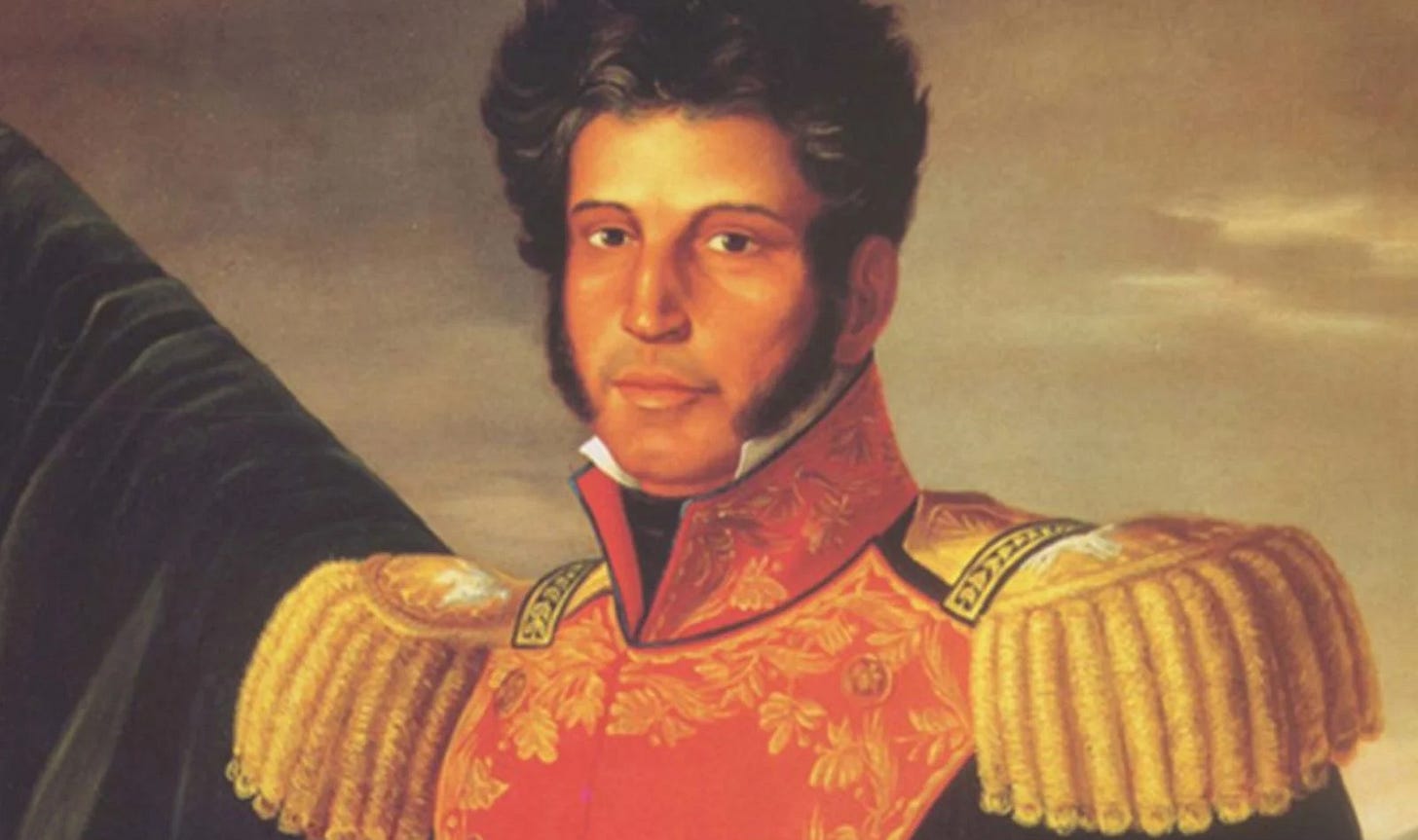The Black Slaves Who Escaped To Mexico
Mexico distinguished itself as a nation with a progressive stance on slavery.
When most Americans think about migration between Mexico and the United States, they imagine a one-way flow from south to north. Historically, this has largely been the case, with millions of Mexicans seeking opportunities in the U.S.
But migration hasn’t always followed this pattern. At different points in history, significant numbers of Americans have crossed the Rio Grande heading south. Among the most notable were enslaved Black people, who fled to Mexico in search of freedom and safety, particularly in the decades leading up to the U.S. Civil War.
The First Black President in North America
From the very start of its independence, Mexico distinguished itself as a nation with a progressive stance on slavery. In 1829, President Vicente Guerrero —someone whom we would call today an Afro-Mexican—issued a decree abolishing slavery. A subsequent refinement of the law specified that any enslaved person who set foot in Mexican territory would automatically gain their freedom and protection.
In this way, Mexico became, much like Canada, a sanctuary for those fleeing enslavement. Black individuals escaping from southern states like Texas found refuge in Mexico, where authorities consistently refused to return them to their captors.
A safe haven with perils
Unfortunately, there aren’t many firsthand accounts from Black slaves who escaped to Mexico. Still, countless small stories survive. For example, in 1851, residents of Coahuila armed themselves to protect a Black family from Texas when a slave catcher tried to capture them.
Later that year, the Mexican army confronted 200 armed Americans who crossed the border searching for runaways. In 1852, when a Black man was kidnapped by a slave owner in Coahuila, four Mexican officials tracked the captor down and killed him in a gunfight.
Like Mexican migrants heading north a century later, Black escapees often faced deadly perils, including getting lost in the desert, falling victim to harsh natural conditions, and bandits. To make things worse, they were pursued by armed mercenaries—some of them high-ranking American officers—hired by slave owners to cross illegally into Mexico and recapture them.
The Legendary Exodus of Wild Cat and John Horse
After Texas gained independence, the flow of enslaved people escaping south increased. Sam Houston’s secretary wrote to President Polk, urging him to negotiate an extradition treaty with Mexico. Polk made the attempt, but Mexico refused.
Tensions escalated when a group of Seminole Indians and runaway Black slaves, led by the chief Wild Cat and a man of African descent named John Horse (known as “Juan Caballo” in Spanish), sought refuge in Mexico.
Wild Cat negotiated with the Mexican government, securing land and freedom for his group in exchange for their service in the army. In 1849, Wild Cat led 800 people—both Indigenous and Black—into Mexico, where they established a community.
Texas newspapers were filled with outrage, and some even called —as it was usual at the time— for the annexation of northern Mexico to stem the problem. Journalist John S. Ford complained bitterly that in Mexico, “slaves are treated with respect and with more considerations than either Americans or Europeans.” This, by the way, was not a compliment, but a criticism.
Armed Incursions and Mexican Resistance
In 1854, Secretary of State William L. Marcy again tried to reach an extradition treaty with Mexico. To do so he sent James Gadsen (the same negotiator who, under threats, managed to buy extra territory from President Santa Anna). Mexico agreed to sell land, but not return the fugitive slaves.
In 1855, tensions boiled over when James Callahan led an armed expedition into Mexico to capture escaped runaways. Governor Santiago Vidaurri of Nuevo León-Coahuila mobilized a defense force of Mexicans, escaped slaves, and Indian warriors. Under the leadership of Emil Langberg, the Mexican forces repelled Callahan’s invasion. Before retreating, the Americans burned the town of Piedras Negras. According to local lore, Mexicans and Black fighters chased the invaders out of the country by shooting flaming arrows to their horses.
A decade later, during the 1860s, Mexico resisted U.S. pressure to extradite escaped slaves, despite needing American support to counter European threats. Ambassador Matías Romero firmly stated that Mexico would never compromise on this issue.
At a certain point, when the United States threatened Spain with invading Cuba if Spain did not agree to sell the island, the Mexican government suggested that the European powers send military aid to invade the Southern states and proclaim together the freedom of the Black people.
“We call Mexico a semi-barbarous people,” American antislavery minister William Ellery Channing is quoted as saying, “and yet we talk of planting slavery where Mexico would not suffer it to live.”
Afro-Mexicans Recognized
Only in recent years, Mexico has begun to recognize its Afro-descendant heritage. For the first time, the 2020 census asked citizens if they identified as Afro-Mexican, Black, or of African descent, marking a significant step in acknowledging this overlooked ethnicity of Mexican.
In 2025, the story of Black refugees fleeing south highlights a profound historical irony. Current immigration debate focuses on deterring northward migration and the US government's intention to deport millions back to Mexico. Yet, 170 years ago, the same country sent armed groups into Mexico to drag back those who had chosen freedom over slavery.




